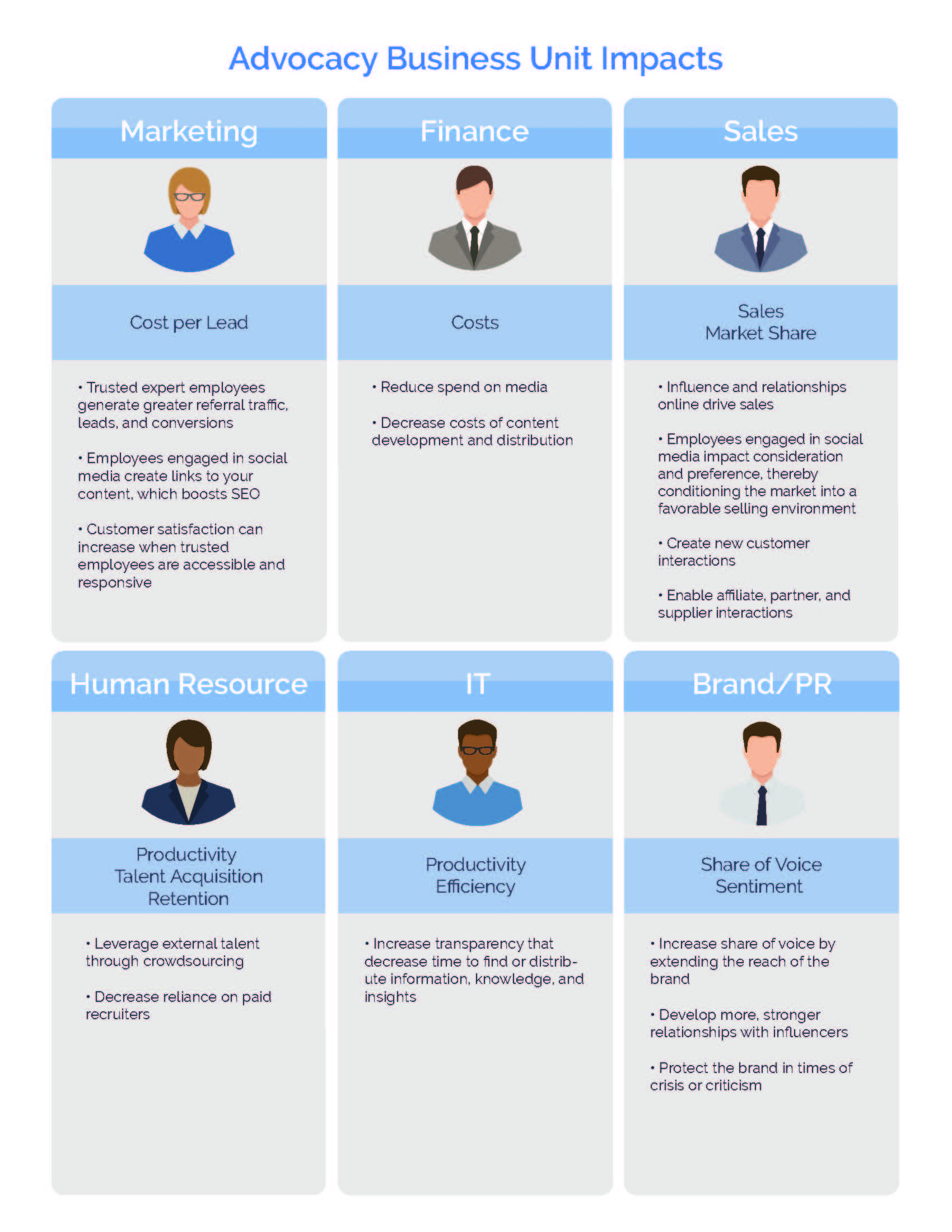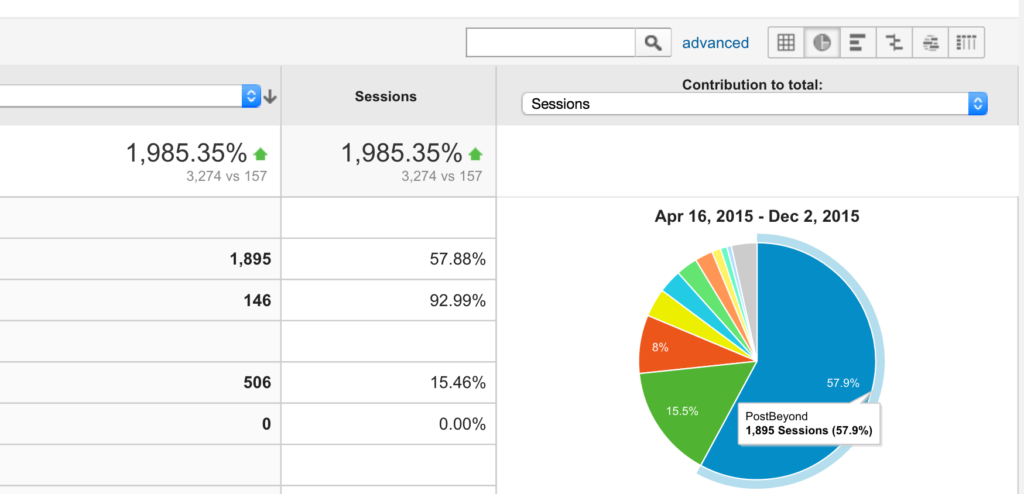Your employee advocacy program is off to a great start. You’ve got the branding down pat, your employees are excited, and you have a detailed content strategy outlined.
The next step: defining KPI’s, measuring, and even more measuring.
We’re going to dive deep into setting and monitoring strategic goals and give you a sneak peek into how we qualify our successes here at PostBeyond.
Goals by Department
Different departments will have different goals for employee advocacy programs – no surprise there! Here’s a look at what different departments in your enterprise may have in mind for goals, and what KPI’s would look like for each:
The goals in each case should be constant. Talent acquisition, for example, would always be a goal for an HR team. The strategies and tactics used to achieve that goal will pivot based on results.
We suggest starting at a high level with your departmental goals and break them down as follows:
Goal: The overarching outcome you’re working toward. Should be constant.
Objective: The measurable result that you want to achieve (increase by xx%)
Strategy: The method or plan you’ll use to reach the goal (persuade, introduce, etc.)
Tactic: Specific ways of implementing the strategy (social media campaign)
KPI: Metrics that will indicate the level of success.
Let’s apply that to the Talent Acquisition goal.
Goal: To attract top talent to our enterprise
Objective: Increase our social referral candidates by 28% by EOY
Strategy: Implement an employee advocacy program that encourages employees to spread the word about our company to potential hires
Tactic: Use PostBeyond to share content with employees
KPI’s: Increased online applications referred from social
Tools for Measurement
Once each department has their goals outlined, the fun begins. Because if you’re anything like us, you love discovering new tools and seeing awesome data visualizations!
There are a wealth of tools out there to measure your program’s success. For now, we’ll go through the ones we use here at PostBeyond to give you an idea of how we monitor our KPI’s.
Google Analytics
To understand where our web traffic is coming from. We use UTM tags to track shares and clicks from social, among other sources.
Pardot
The UTM parameters from Google Analytics are parsed to Pardot for first-time visitors. This allows us to track that individual visitor over time, and whether or not they’ve converted into a qualified sales lead.
Salesforce
Salesforce + Pardot = dynamic duo. We sync Salesforce with Pardot so we can see the complete buyer journey, and how much revenue originated from PostBeyond shares over time.
PostBeyond
It should be no surprise that we use our platform’s analytics capabilities to their full potential. PostBeyond’s analytics dashboard for admins gives detailed insight to program managers, including…
- Earned Media Value
- User performance metrics
- Potential reach
- Clickthroughs
- Likes/favs/comments
- Shares
These metrics are available for the enterprise in total, certain groups, or even down to the individual user level.
Our ROI Calculator will also come in handy when calculating Earned Media Value or saved cost on social media training. Give it a try!
Goal Setting the PostBeyond Way
We take a very strategic approach here at PostBeyond. Our Digital Marketing Manager, Dan, has written about the importance of goal setting in the past, and we’re constantly pivoting our approach to ensure that we’re meeting our goals in the most efficient way possible.
So what does our strategy look like, and how do we measure it?
I’d love to share it with you.
Our goal as the marketing team is, ultimately, to generate leads for our sales team. This goal is unlikely to change.
The strategy is to create and distribute strong content that drives traffic to our website and captures leads.
Our objective is to increase web traffic by 50% quarter over quarter.
Tactics for this would include asset creation, social media campaigns, and promotional blog posts.
KPI’s:
- Increased web traffic
- Downloaded assets
- Demo requests
We measure all of these metrics using the tools mentioned above, report, and adjust our objectives accordingly.
Which Metrics Matter?
When defining your KPI’s, it’s important to be critical in asking yourself why they matter. If, for example, you’ve set “increased page likes” as one of your KPI’s, ask how this will convert to a dollar value (directly or indirectly). If it’s an indirect correlation, how do you plan on measuring it? Which analytics tools will help you monitor that?
This can be a bit tricky with loftier metrics like brand awareness. We know that getting your brand out there matters, but how do you quantify it?
There are tools to help you calculate earned media value and cost per acquisition, so they’ll help with demonstrating the dollar value there. Even if these tools didn’t exist, there are ways to calculate these values to prove ROI (But who wants to use a calculator? Not this writer.)
No matter which method you prefer, ALWAYS refer back to what measurable value each KPI will demonstrate for your enterprise. Vanity metrics like “increased engagement” that lack quantifiable value won’t help you in the long run.
Your Turn
You know all about the importance of defining goals for your employee advocacy program, so how will you measure them? What are your favourite tools or integrations for quantifying your successes and areas for improvement?
Defining your KPI’s and the analytical tools used to track them is a critical step to launching a successful employee advocacy. Download our 11 Step Guide to Enterprise Social Media Advocacy to learn more.







